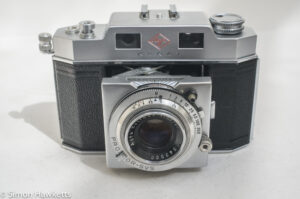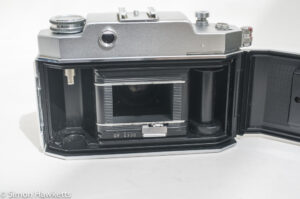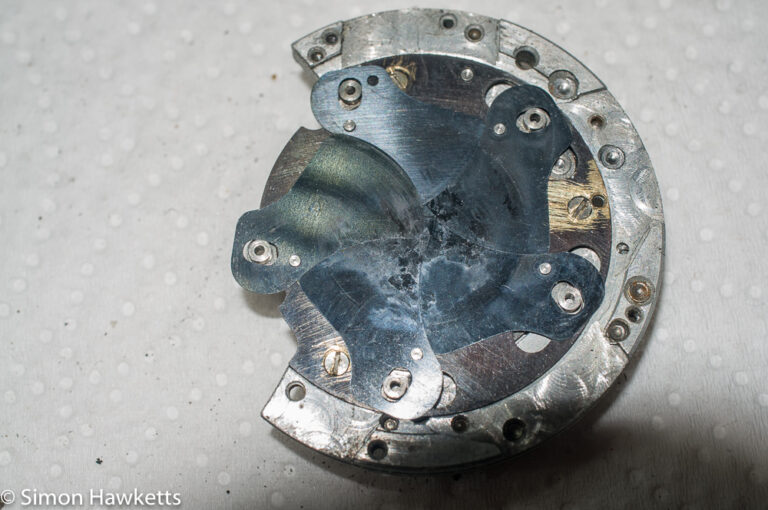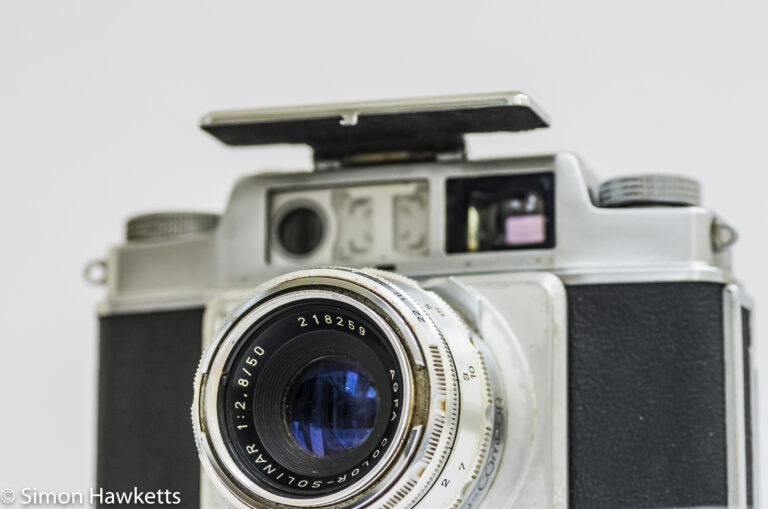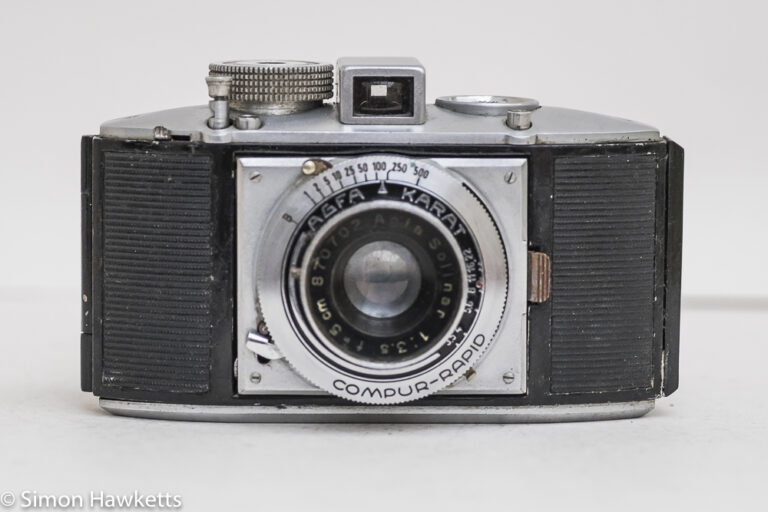Impressive Agfa Karat IV 35mm rangefinder camera
The Agfa Karat IV was the final iteration of the Karat design and probably the most impressive of the line-up. The cartridge film system of the early models was dropped in favour of the standard 35 mm film cassette, and the Compur shutter replaced with a Prontor-SVS shutter. The camera still retained some of the best features of the Karat series however, such as the collapsing lens system, relatively small body size and improved rangefinder.
My Agfa Karat IV Camera
I bought this camera in an auction on eBay. One of the problems with the Karat series, and the IV variant in particular, is that they can fetch a high price; I’ve seen ‘buy it now’ offers for up to £200 which is simply ridiculous. Many of these cameras are described as ‘fully working’ (which I would probably take with a pinch of salt anyway), but even so, there is no reason why a mass-produced camera from Agfa should cost that much.
I was therefore attracted to this example because it was in an auction starting at £4.99, and I managed to secure it for a touch under £17 which I consider a fair price.
In the seller’s description the camera was listed as not working, and when I received it a few days after the auction I confirmed that was the case. The winding mechanism was locked and the focus control difficult to move.
The winding mechanism was a simple fix – I just opened the back of the camera and moved the film transport barrel with my fingers, and the mechanism sorted itself out and would then work.
However, I then found that although I could move the film transport, the shutter itself didn’t fire. I could see the cocking shaft turning, so I thought that the shutter itself was locked. Interestingly, the self-timer was set when I received the camera, so the most likely problem was that the self-timer was wound up but won’t wind down, and therefore the shutter was held locked. I’ll need to get the shutter off the camera to look at that, but, assuming it is similar to the Karat 12, that should be relatively easy.
The focus stiffness is a common problem with the Karat series – the grease which was used originally in the factory freezes up after 50 or so years and needs to be removed and replaced with a modern grease. That’s a job I’ve had to do on all my Karats and again is relatively easy.
Other than the problems listed, the general cosmetic condition is excellent, with just a bit of paint loss on the back door and a slight issue with the film pressure plate. It has become dislodged at some point in the camera’s life, and has fouled the sprocket, which has left it scratched. I hope I can clean it down and re-paint it, although as long as it is smooth it shouldn’t affect anything if it is left with the paint damaged.
Agfa Karat IV Pictures
The gallery below shows some pictures of the Agfa Karat IV.
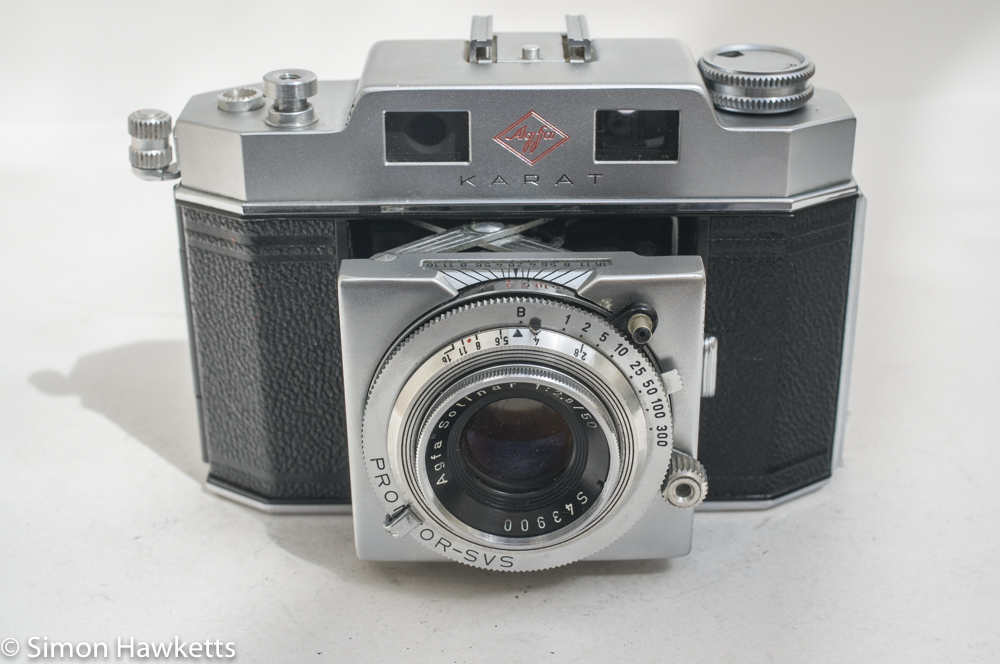
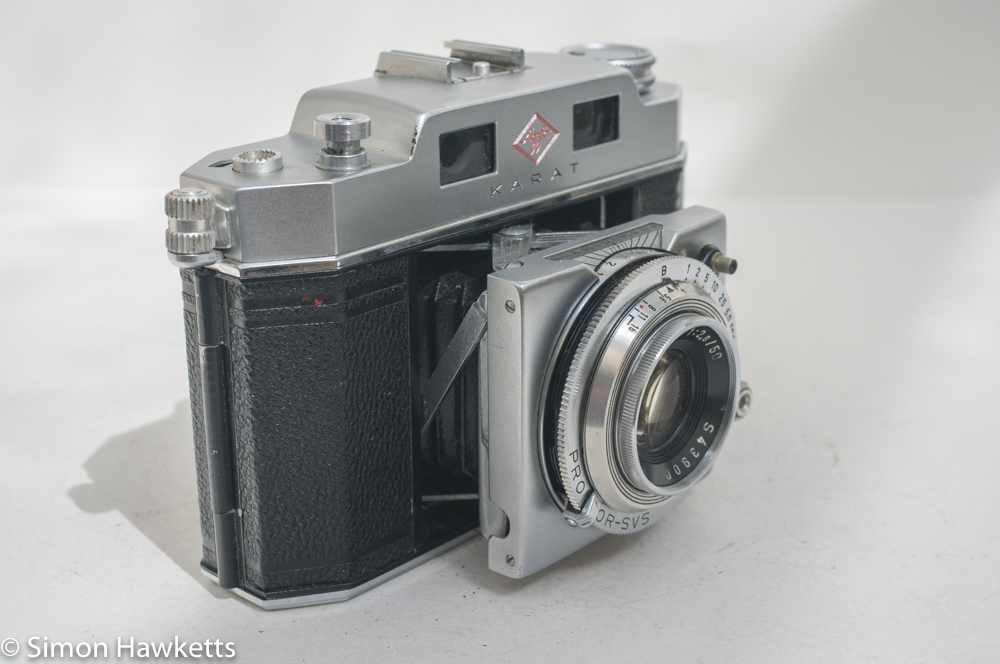
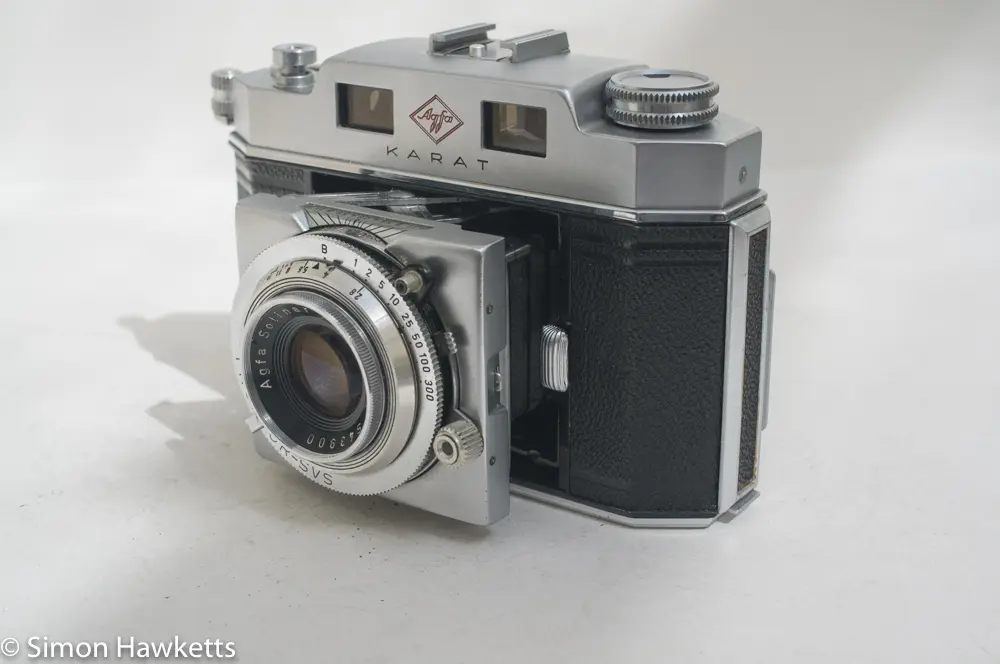
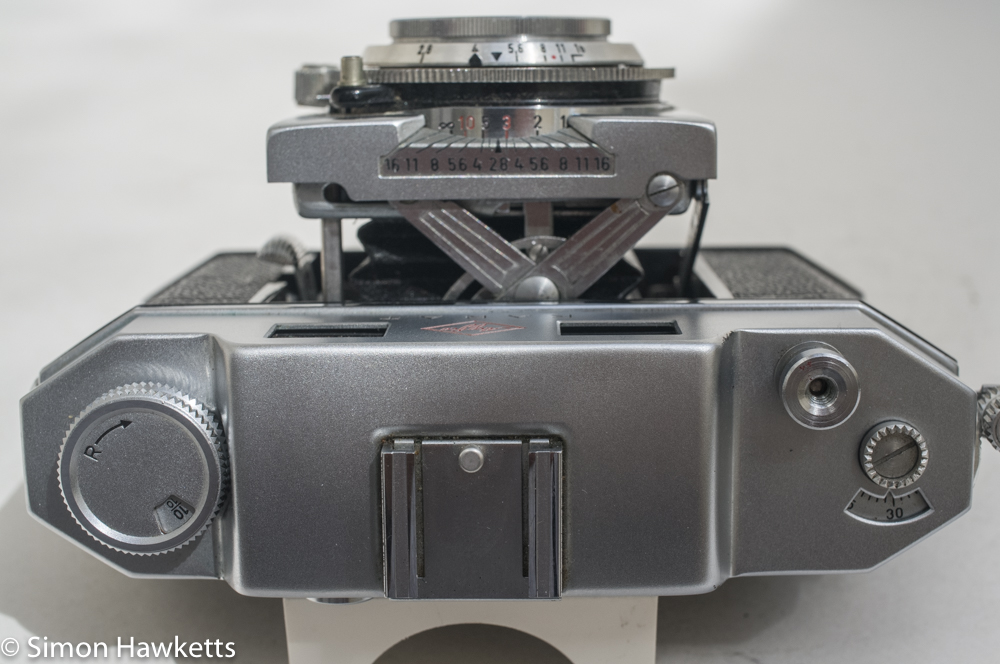
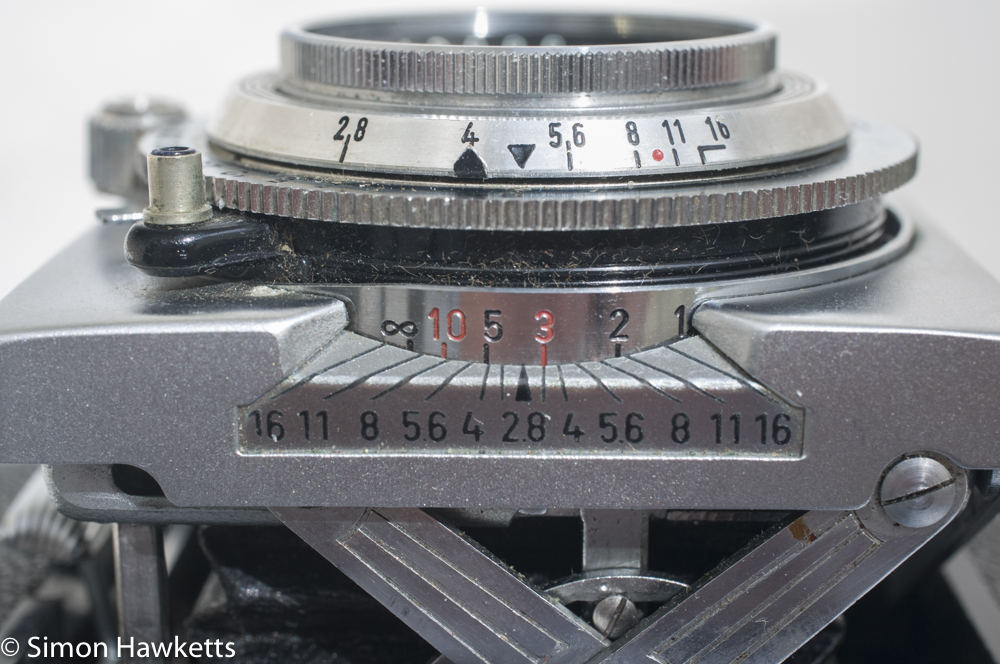
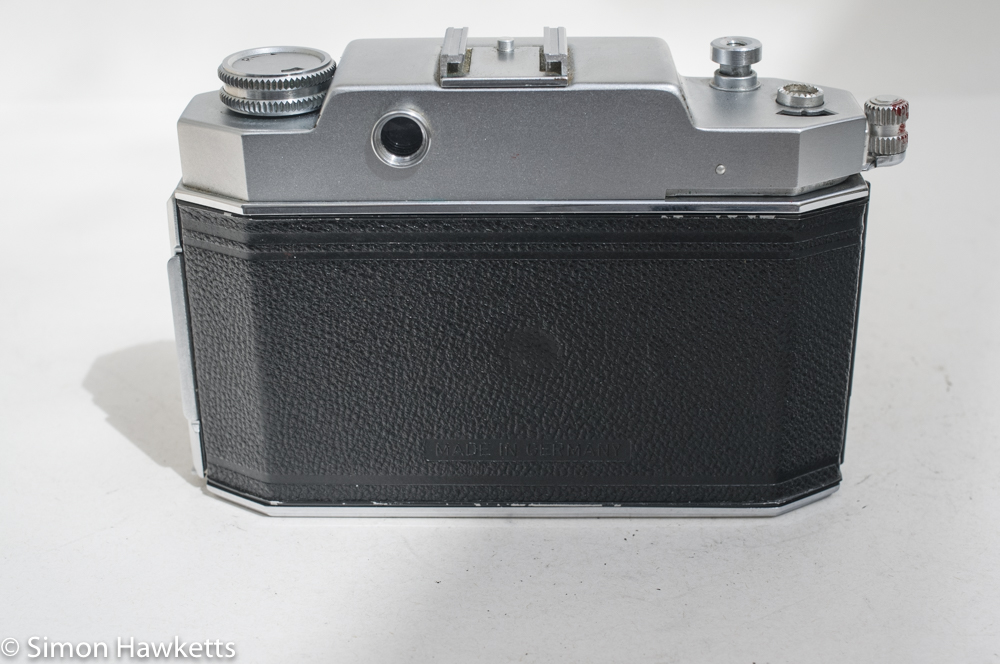
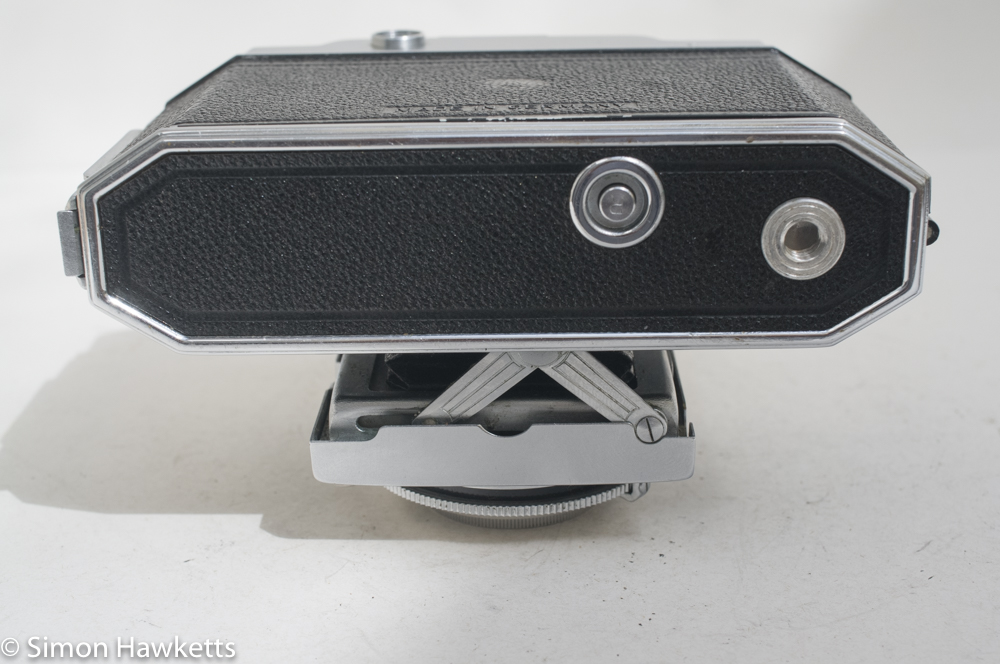
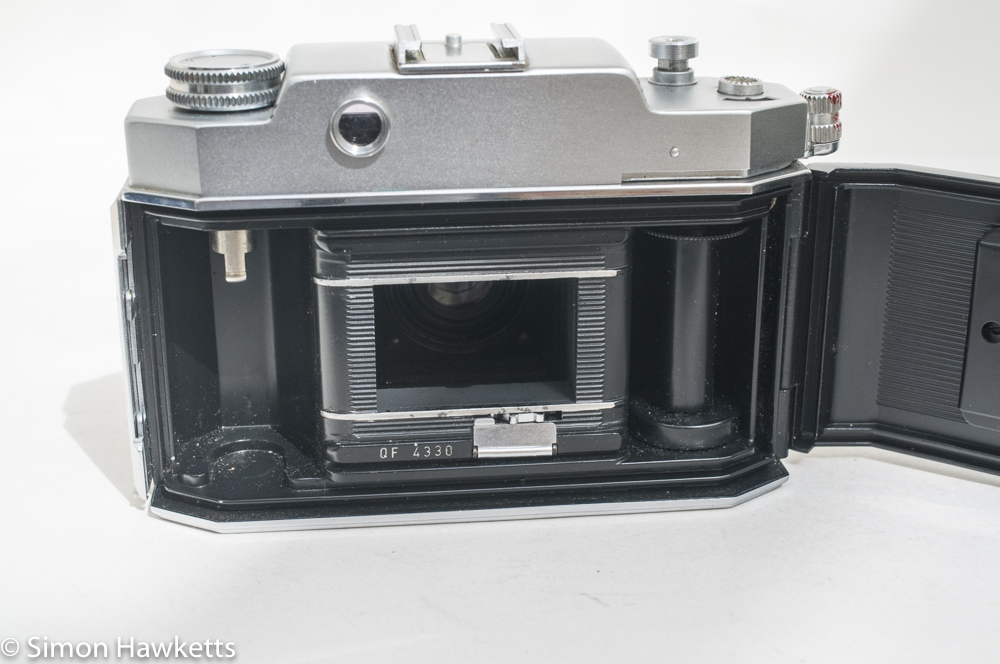
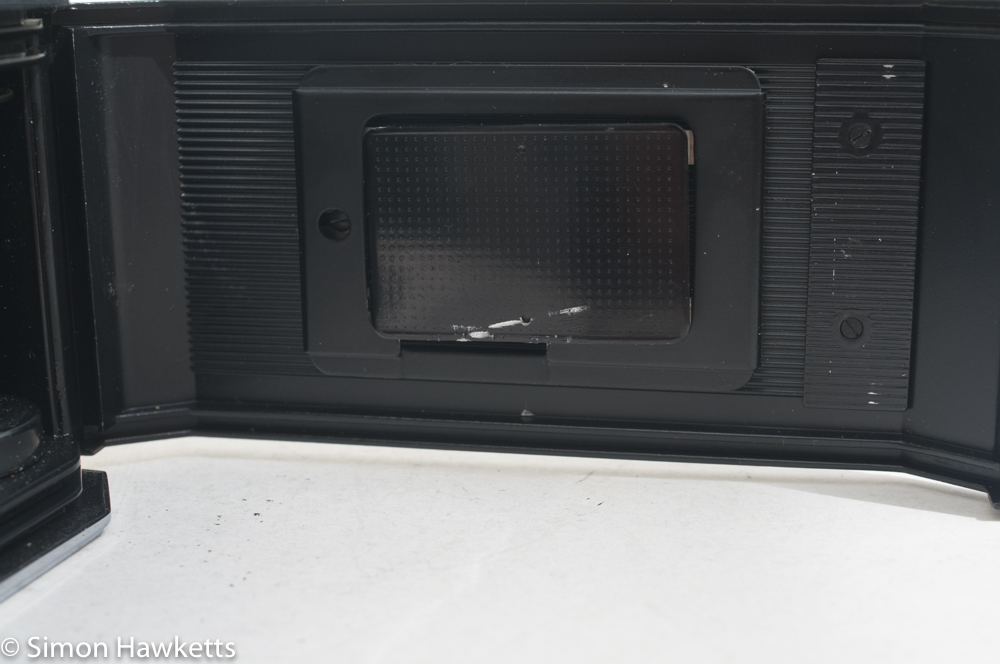
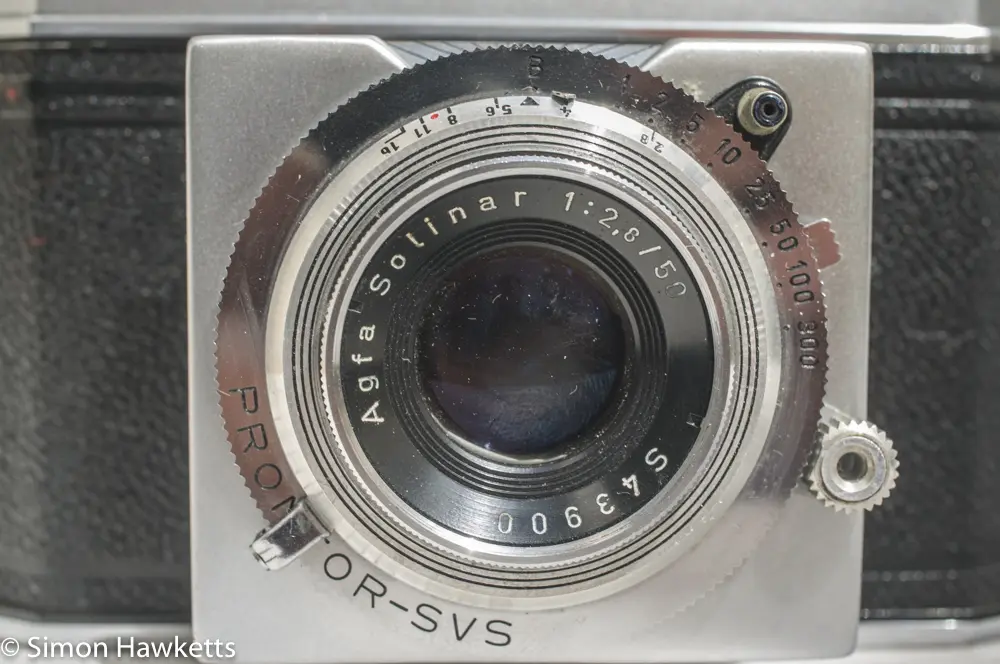
Agfa Karat IV Description
The model IV Karat is a well engineered camera with a feature set similar to the Kodak Retina series, and was aimed at the advanced snapshot / amateur photographer who might otherwise be tempted by the Kodak camera. It was a bit less expensive than the Retina, but had a slight disadvantage in that the lens was fixed, whereas some of the more expensive Retina series had replaceable lenses. In design, it is a very similar camera, with bellows which allows the camera to be collapsed to a smaller size but expanded when required to be ready for immediate use.
The main difference between the Karat IV and the other Karat cameras in my collection is that the IV model uses 35 mm film in standard cassettes instead of the Karat cartridge that the earlier cameras used. This obviously makes the camera much more usable today, and this could be one reason why the camera is generally more expensive than the other models in the series.
The camera is physically bigger and heavier than the earlier f/3.5 models, and slightly bigger than the Karat 12 model. However, it is still a fairly handy size because the earlier models were really miniature cameras, but it wouldn’t be quite as easy to fit into a coat pocket as the earlier models.
The focus is achieved by way of a coupled rangefinder, as with the Karat 12, but the IV has a more conventional superimposed image design rather than the split image design of the earlier model. Personally, although I like split image designs on SLR cameras where they form the centre portion of the viewfinder, I like the superimposed design of the IV better than the model 12. It is nice and bright and although the focus control is difficult to move at the moment, once it has been cleaned up I think it will be easier to use.
The shutter is a self cocking design on the IV which is obviously much easier to use than having to remember to cock the shutter manually and there is an interlock to stop multiple exposures and to stop missed pictures by double winding the film. At the time this camera was made, in the early to mid 1950s, that was really a requirement since lots of other camera manufacturers has started adding those sorts of features to their cameras.
The film transport uses the same slightly odd ‘front to back’ action that the model 12 uses, which actually grows on you as you get used to it.
The lens fitted to my example is the Agfa Solinar 50 mm f/2.8 unit which is supposed to be a reasonable quality lens although not the best lens available because as well as this lens, other versions were available with a Rodenstock f/2 lens, a Xenon f/2 and an Agfa Soligor lens.
I have a bit of work to do on my example to bring it up to scratch, but once it is fully working I will post some sample pictures I’ve taken with it.
Agfa Karat IV Description
- Agfa Karat 35 mm rangefinder camera
- Collapsible front standard to reduce size
- Coupled rangefinder with overlap display
- Film advance coupled to shutter for automatic cocking
- Prontor SVS shutter
- 1 sec to 1/300 sec + bulb
- Solinar 50 mm f/2.8 lens
- Aperture f/2.8 to f/16
- Depth of field scale
- ‘Front to Back’ film transport
- Manually settable frame counter
- Film type reminder
- Standard 35 mm film cassette
- Manual available on-line here.
Discover more from Everything Vintage
Subscribe to get the latest posts sent to your email.

